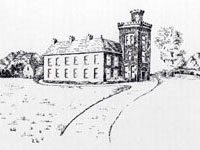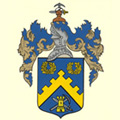The origin of the name Seaver has long been a matter of debate among family historians. Dr. Edward McLysaght, in his book, "More Irish Surnames", claims that it derives from an old English word - he doesn't say what the word is - meaning 'sea-farer'. The Historical Research Center Inc. (U.S.A.) offers an opinion that the name derives from the Old English female personal name 'Saefarer', meaning 'sea-passage'. Another American explanation, apparently based on an entry in William Dugdale's Monasticum Angelicum, offers a derivation from the Old English seave, meaning 'a rush', i.e. the plant. A 'seaver' therefore, would have been a person who, in Saxon times, dealt with, or harvested, rushes, perhaps for the making of rush mats, or rush blankets. There has even been a suggestion that Seaver derives from the Latin 'severus', with the meaning 'of severe, or austere manner'. However, this may be discounted, on the grounds of the accent in the Latin word being on the second syllable.

In the case of the Irish Seavers, all of these explanations are rejected by Rev. Dr. George Seaver (1892-1975), who published the "History of the Seaver Family" in 1950. He suggests that the name is of Scandanavian origin and furthermore, that it is a corruption of Sigurd, the Norse hero, otherwise known as Sigurd the Stout, Lord of the Orkney Islands in the late 10th and early 11th Century. He took part, and was slain, in the Battle of Clontarf, in 1014 A.D. In his book, George Seaver explains that the name Sigurd consists of two parts: the initial Si, is anglicized to Sae, and from that into Se and Sea, meaning 'victory'. The -gurd part, evolving into -ver, is more difficult to explain. He claims gurd is an old Norse word, meaning 'guard', or 'guardian'. Therefore, 'Sigurd', being the original patronymic of Seaver, means 'Guardian of Victory'.
We may infer from the above exposť, that the surname Seaver may also be hidden in other forms, such as Sever, Sevar and Saever. These forms sometimes appear in old documents and there are some examples quoted in Dr. Seaver's book, e.g. John Sever, a juror on a case in Kildare, in 1284 (p. 2) and Thomas Sevar is among other contributors to the Hearth Tax during the Cromwellian period (p. 5).

The Irish language, i.e. Gaelic version of Seaver is given as Saomhar, and is pronounced roughly as 'say-ver'. Even to the present day, local pronunciation of the name, especially among country people in the Lusk district, in Co. Dublin, is such that the first syllable is always given an 'ay' sound, similar to the Gaelic.
The publication of Dr. Seaver's book - it comprised a limited edition of only 250 copies and is now a collector's item - was an important genealogical watershed for the Irish Seaver families. It made them proud to belong to a clan that had a long line of ancestors with many interesting historical connections and it awakened in them a desire to know more about their forebears.
Until the book appeared, many people were unaware that there were two distinct strands in the family in Ireland. The Lusk Seavers knew nothing of their distant cousins in Armagh, nor were the Armagh Seavers aware of their kinsmen in Lusk. Yet, they had a common ancestor in Nicholas Seaver, of Lusk, who died in 1630. It is thought that his son, also Nicholas, left Lusk and founded the Armagh branch of the family later on in the 1600s.
The ancient connection between the two branches was restored at the first Seaver Clan Reunion, which took place in July 2002, in Malahide, Co. Dublin and which was attended by 120 members from both branches. A second reunion took place in 2007, at which it was decided to set up a Seaver Family website, so that members can keep in touch. This has now been organized through the good offices of Tom Seaver (Lusk Branch) and Peter Seaver (Armagh Branch).
